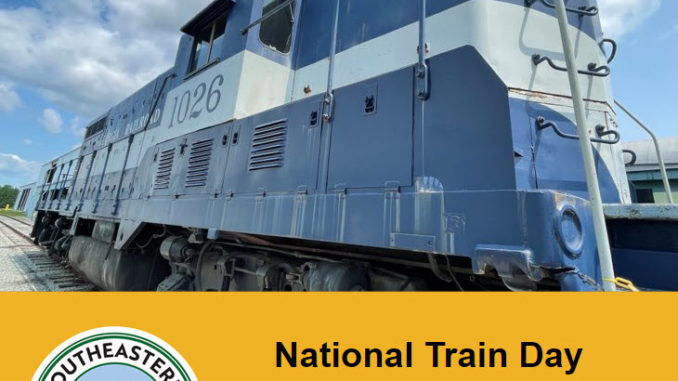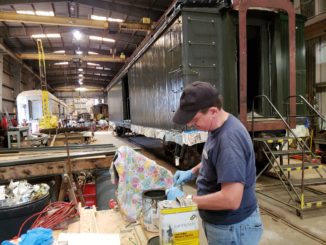
Each year, the United States celebrates National Train Day on the Saturday closest to May 10th. Why? It was then that the first U.S. transcontinental railroad joined the East and West Coasts together permanently by rail as officials pounded the Golden Spike into the ground in Promontory, Utah.
Railroads profoundly changed the trajectory of the United States. People could suddenly travel across the U.S. much more easily than before. People easily travelled from the East to the West in a matter of days instead of months resulting in more people moving West. Not only did the West benefit, but towns along the way began to thrive as travelers needed places to rest and eat along the way.
People were able to get out and about not just for relocating, but to explore and travel. John Muir, America’s great naturalist, stated “where the distances are so great, the railroad brought near and far closer together.”
Manufacturers also realized they could expand their distribution footprint across larger regions. Companies such as Montgomery Ward (think an old-timey Amazon) created the first mail-order catalog business since shipping goods was now so easy.
Most people do not realize how much the railroad influences our lives today. Here are a few facts:
- Railroads move approximately one ton of goods more than 480 miles per gallon of fuel.[1] How is that for good gas mileage?
- Freight railroad employees earn an average of $135,000+ per year in compensation.[2] That is a great income today!
- Passenger trains are 34% more energy efficient than planes and 46% more energy efficient than travelling by car.[3]
- Each year, almost 500 million people travel by train in the United States, including Amtrak’s 30 million passengers. This adds up to 6.4 billion passenger miles each year![4]
- The U.S. moves more oil out of North Dakota by railroad than the Trans-Alaskan pipeline.[5]
The railroads have also had an enormous influence on things we say every day.
Train Terms
| Term | Everyday Use | Railroad Use |
|---|---|---|
| All aboard/Get on board | To agree with, move in the same direction | To board a train |
| Derail | Lose control | For a train to literally come off the track |
| Gravy train | Easy money, easy work | A short haul that pays extremely well |
| Hell on wheels | Tough, aggressive, mean and wild | The last town on the line - as the First Transcontinental RR moved across the U.S., a small town moved with them to help the workers spend their money on alcohol, women, and gambling |
| Letting off steam | To get rid of energy without violence | To safely release excess energy from the steam engine |
| Making the grade | Succeeding or doing well | Railroad proceeds up a hill or a gradient |
| Sabotage | Deliberate destruction of property for a reason | French railway workers cut the sabot (metal shoe) that held railroad tracks in place as part of their strike against working conditions |
| Sidetrack/Off track | To get off topic, distracted | A secondary track or line |
| Streamlined | Created to get the least resistance | A train designed and shaped to move fast and efficiently, with little wind resistance |
So now that you know a little more about how trains have helped shape your life, take a moment to reflect and while you’re at it, swing by the museum!
[1] Association of American Railroads
[2] Association of American Railroads
[3] Energy Data Source: Transportation Energy Data Book, Edition 39, 2021
[4] https://en.wikipedia.org/wiki/Rail_transportation_in_the_United_States
[5] https://blogs.scientificamerican.com/plugged-in/u-s-moves-more-oil-out-of-north-dakota-by-rail-than-the-trans-alaskan-pipeline/



